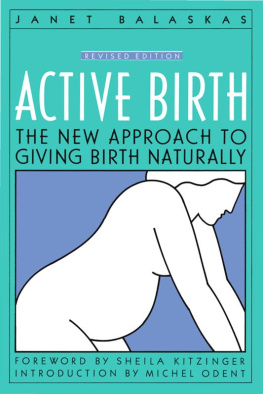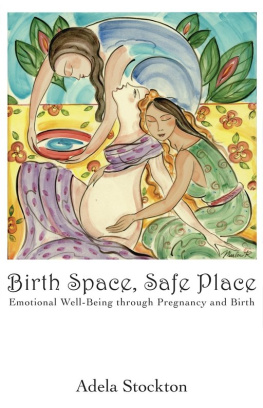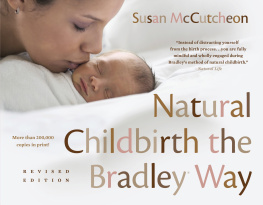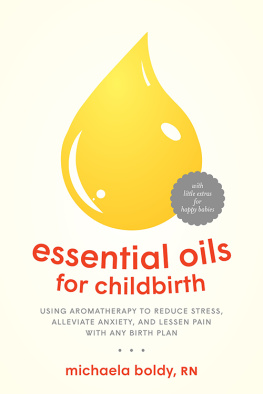Unassisted Childbirth
Laura Kaplan Shanley

Copyright 2012 by Laura Kaplan Shanley
All rights reserved. No part of this publication may be reproduced, stored in a retrieval system, or transmitted, in any form or by any means, electronic, mechanical, photocopying, recording, or otherwise, except for the inclusion of brief quotations in a review, without prior permission in writing from the publisher.
Library of Congress Cataloging-in-Publication Data
Shanley, Laura Kaplan.
Unassisted childbirth / Laura Kaplan Shanley ; foreword by Michel Odent. 2nd ed.
p. cm.
Includes bibliographical references and index.
ISBN 9780313397158 (hardcopy : alk. paper) ISBN 9780313397165 (ebook)
1. Natural childbirth. I. Title.
RG661.S48 2012
618.45dc23 2011043412
ISBN: 9780313397158
EISBN: 9780313397165
16 15 14 13 12 1 2 3 4 5
This book is also available on the World Wide Web as an eBook.
Visit www.abc-clio.com for details.
Praeger
An Imprint of ABC-CLIO, LLC
ABC-CLIO, LLC
130 Cremona Drive, P.O. Box 1911
Santa Barbara, California 93116-1911
This book is printed on acid-free paper 
Manufactured in the United States of America
This book discusses treatments (including types of medication and mental health therapies), diagnostic tests for various symptoms and mental health disorders, and organizations. The authors have made every effort to present accurate and up-to-date information. However, the information in this book is not intended to recommend or endorse particular treatments or organizations, or substitute for the care or medical advice of a qualified health professional, or used to alter any medical therapy without a medical doctors advice. Specific situations may require specific therapeutic approaches not included in this book. For those reasons, we recommend that readers follow the advice of qualified health care professionals directly involved in their care. Readers who suspect they may have specific medical problems should consult a physician about any suggestions made in this book.
Miracles are nature unimpeded.
Jane Roberts
Contents
by Michel Odent, MD
Foreword
Whenever a new phenomenon is suddenly emerging and spreading all over the world, the point is to analyze it and to interpret it. This is the case with the unassisted childbirth movement. We must wonder what this phenomenon means in the context of the twenty-first century.
Let us first recall that for thousands of years childbirth has been highly controlled by cultural milieus: all cultures have multiplied the ways to insistently suggest that a woman is not able to give birth by herself and that the participation of at least one other person is needed. The roots of the words we commonly use reveal that such a conditioning, induced and supported by beliefs and rituals, is ancient. For example, the word obstetrics comes from the Latin obstetrix, which means the midwife. The roots of this word (ob-stare) suggest that a person must stay in front of the laboring woman. Women rarely say that they gave birth. They talk about the midwife or the doctor who delivered the baby.
This deep-rooted conditioning has been exacerbated during the past decades by new kinds of cultural interferences. On the one hand, there is the control by the medical institution. On the other hand, our conditioning has been recently reinforced by the power of visual messages that characterize our time, particularly by the effects of a real epidemic of videos of so-called natural childbirth. It is always the same kind of story: a laboring woman is surrounded by two or three people looking at her (including a man, plus a camera since there is a video). These births are deemed natural because they occur at home, or because the mother is on hands and knees, or because she is in a birthing pool. But the environment is as unnatural as possible. This is how, in terms of cultural conditioning, an extreme degree has been reached. Young generations are more than ever deeply convinced that to give birth a woman must rely on people who bring their expertise (a coach) or their energy (support). One can wonder if, in spite of the power of modern physiology, the current deep-rooted lack of understanding of the basic needs of laboring women is reversible.
It is in such a context that the unassisted childbirth movement, symbolized by Laura Shanleys book, is challenging all the established ways of thinking, from the promoters of emotional support during labor up to the promoters of elective cesarean on demand. With Laura we suddenly realize that in childbirth there are only two obligatory actors: the baby and the mother. We recall that all mammals isolate themselves to give birth, as human mothers also did in preliterate and pre-agricultural societies. We are given some clues to interpret well established but not well-digested physiological concepts (such as the concept of adrenaline-oxytocin antagonism and the concept of neocortical inhibition). All these concepts lead to the conclusion that to give birth a woman needs to feel secure without feeling observed. In the light of modern physiology, to be assisted by another person does not appear to be a basic need.
At a turning point in the history of childbirth, Lauras book offers an opportunity to phrase our objectives in a new way. The current tendency is to use a negative way, by claiming that the priority is to reduce the number of obstetric interventions, particularly the rates of cesarean sections. Laura suggests that the objectives should instead be phrased in a positive way. With Laura we relearn that the priority is to make the births as easy as possible, and this, as she points out, is best accomplished by natural means, not artificial ones.
Michel Odent, MD
Preface
Someday women will not give birth in hospitals because they will realize that childbirth is not a disease. They will not pay physicians thousands of dollars to probe them and cut them and tell them what to do. They will not submit themselves to IVs, fetal monitors, vaginal examinations, or cesarean sections. Nor will they take the hospitals into their homes, bringing there the well-meaning substitute doctorsthe midwiveswith their sterilized instruments, rubber gloves, and breathing techniques. For none of this will be necessary.
Instead, like their animal sisters, women will someday deliver their own babies peacefully and painlessly at home. Women will understand that birth is only dangerous and painful for those who believe it is.
Someday both women and men will understand that childbirth (and every other event in their lives) is the result of their individual beliefs. They will no longer listen to the voices of officialdom telling them that their lives are beyond their self-conscious control. They will listen instead to the inner authority saying, Your life is your own creation. Believe in yourself and you have nothing to fear.
My goal in writing this book is to help make that someday today.
Acknowledgments
This book was actually conceived in 1976 when my soon-to-be husband, David, presented me with a copy of Grantly Dick-Reads Childbirth without Fear. A seed was planted the moment I began turning the pages. A new bud emerged with each child to whom I gave birth. And at last, it blossomed into this book.
Aside from my immediate family, I have never come face to face with most of the people who were instrumental in its creation. Many of them I know only by their written words: Jane Roberts, Gerald Heard, and Pat Carter, to name a few. Others I know through numerous letters and phone calls: Marilyn Moran, Kathy Lanzalotta, Rob Butts, and Lynn Flint.











